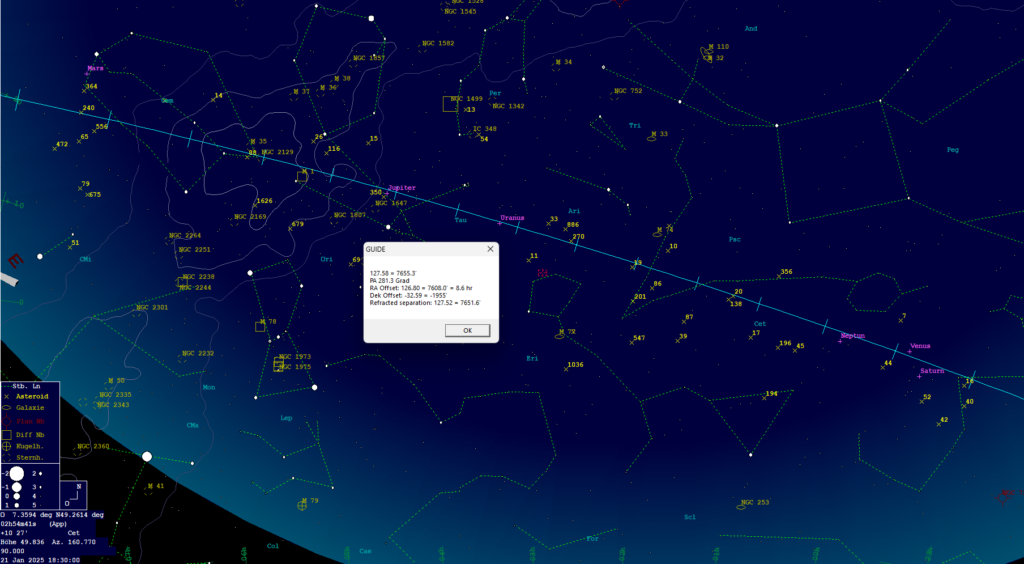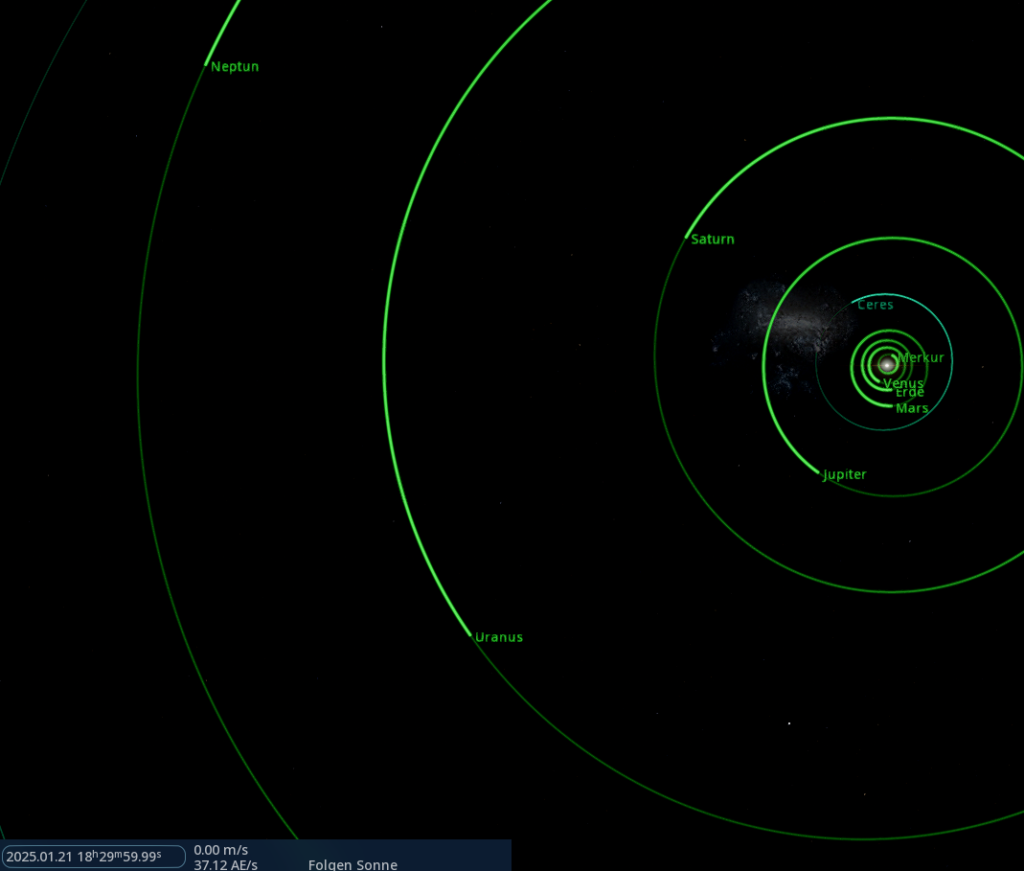The "planetary parades" 2025
Over the past few days, numerous media outlets have reported on an unusual parade of planets on January 21, 2025, with six planets seemingly aligned in the evening sky.
It is true that there are six planets in the evening sky, but this should be put into perspective.
What planetary constellations are there and how frequent are they?
- Mini constellation (3 planets): Occurs approximately annually.
- Small constellation (4 planets): Occurs every few years.
- Large constellation (5-6 planets): Appears approximately once a decade.
- Grand or complete constellation (7 planets): Very rare. In the past, Pluto was also included here, but it is no longer considered a planet.
At the end of June 2022, there was a major constellation in the morning sky with Mercury, Venus, Mars, Jupiter, Saturn and Uranus.
There was a great constellation with all the planets on April 8, 2024, albeit after sunrise in the daytime sky, but could be easily observed by many during the total solar eclipse in North America.
Why should "planetary parades" be seen in a somewhat relative light?
Only five of the planets in the solar system can be observed with the naked eye:
- Mercury: Due to its proximity to the sun, it can only be observed for a short time after sunset or before sunrise. According to legend, even the famous astronomer Nicolaus Copernicus regretted on his deathbed that he had never seen Mercury.
- Venus: Like Mercury, it can only be observed in the morning or evening sky. Next to the sun and moon, it is the brightest object in the day or night sky.
- Mars: Reddish to observe the time of opposition throughout the night.
- Jupiter: Ochre-colored, very light.
- Saturn: Like a brighter star.
What limits the whole thing is the visibility of Uranus and Neptune. These are reserved exclusively for binoculars or even smaller telescopes. They are not visible to the naked eye.
Constellations this year (not all visible from every place on Earth)
January 21, 2025Great constellation (Mars, Jupiter, Uranus, Neptune, Venus and Saturn in the evening sky.
February 28, 2025Great constellation of Saturn, Mercury, Neptune, Venus, Uranus, Jupiter and Mars in the evening sky.
April 15, 2025Small constellation of Neptune, Mercury, Saturn and Venus in the morning sky.
August 11, 2025Great constellation of Mercury, Jupiter, Venus, Uranus, Neptune and Saturn in the morning sky.
Here is the visibility of the six planets on 21.01.2025. As already mentioned, at least binoculars and the exact position in the sky are required for Uranus and Neptune.

Perpendicular to the ecliptic as seen from space:

